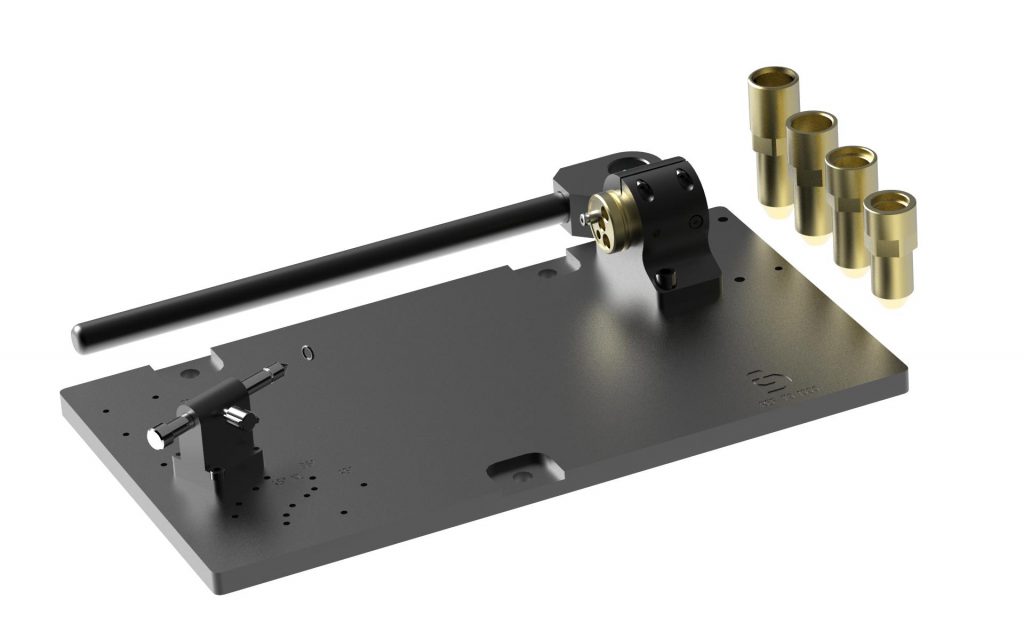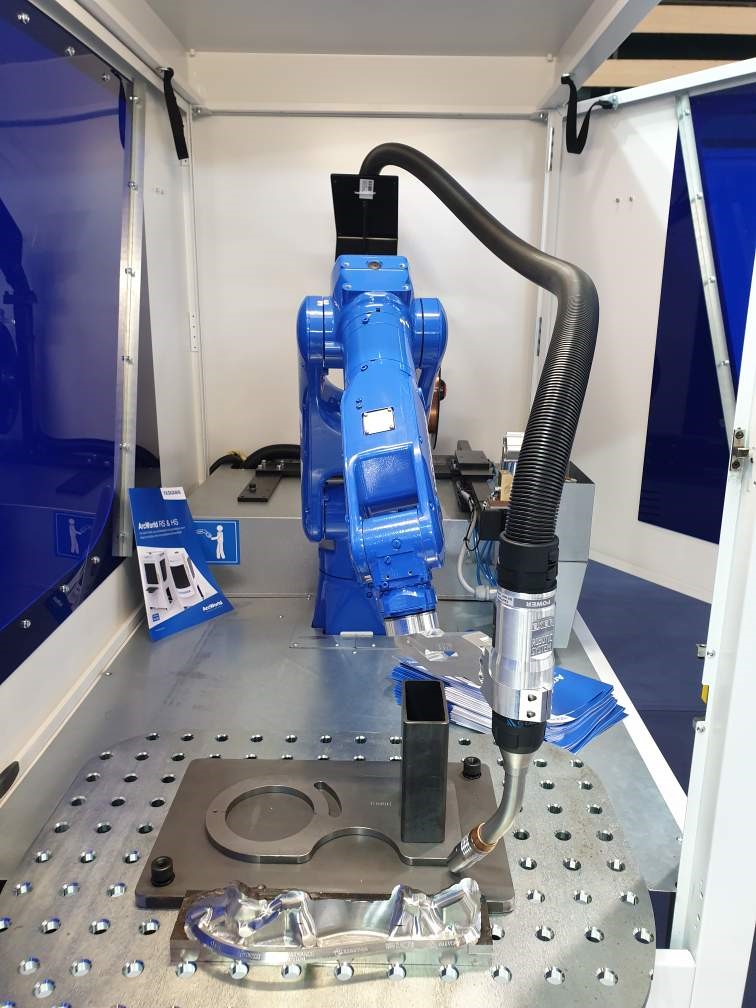In the manual welding sector, the components of an arc welding torch are well-known. From nozzles or liners until Euro connectors, commonly every professional is acquainted with them and they know their respective purposes. However, whenever the matter is about robot welding torches, often some uncertainty appears about the whole composition of the torch. Let’s use this new entry to explain the most important elements.
1. Swan neck (MIG/MAG) or head (TIG)
The swan neck (GMAW or MIG/MAG) or head (GTAW or TIG) is the front part of the torch. It is a key part for the torch performance since it is the closest part of the torch to the heat source generated by the electric arc. Torch manufacturers usually dispose of a full catalog of different swan necks so that the welder or installation technician can choose the most proper for the welding set up. They can be liquid-cooled or gas-cooled. Contrary to a regular hand torch, the neck or head of a robotic torch usually must be fastly removable so that it eases its interchange and this way permits minimizing the stop time. In the most powerful ones, the coolant gets right to the nozzle to maximize the effectiveness.

2. Cable set
The cable set is the middle and rear part of the torch consisting of all the different conduits nedded for the operation and the wire feeder connector. These conduits transfer power and welding gas along with the welding wire as in a hand torch, but in addition they contain often an extra hose for compressed air. Same as necks, cable sets can be gas-cooled or liquid-cooled. There are cable sets with special functions, as: wire brake, push-pull, touch sense.

3. Bracket. Only for over-arm robots
Over-arm robots need by design a bracket holding tightly the torch. In this previous article we describe the two main types of industrial robots existing. One of the advantages of hollow-arm robots is the absence of this bracket. There are rigid brackets, i. e. they admit only a unique way to mount the torch on it; and also adjustable brackets, which thanks to several holes they admit different positions. For over-arm robots, ED-Robotics® has a cutting-edge system: by the use of a bracket named Compact, the weight suspended on the anticollision system is significantly lower than a traditional one. This way, the inertias it withstands are also lower and hance the robot can work at a higher speed with the same sensitivity.

4. Anti-collision device
Industrial robots need a safety system between the robot and the tool that is sensitive to impacts and protects the robot, tool and any element within reach. The anticollision system can work with different physical principles: electro-mechanic, pneumatic or magnetic.


5. Adapter flange
Screwed on the front face of the robot arm we find a component that make possible the tight assembling of the welding torch to the different robot models. The welding torch manufacturer supplies this part with a disc shape with the convenient screws. This mechanic interface is standard.

6. Accessories
For the proper manteinance of the arc welding torch some additional elements may be required. For instance, a neck wrench or a nozzle reamer compatible with both cleaning station and torch neck. When using a MIG/MAG robotic torch, occasionally is used a swan neck TCP rectifier, i. e., a special tool that permits correct little deformations that can occur after eventual impacts.


As shown, generally a robot welding torch is more sophisticated than hand or automatic torches. In our products/robotics website section you can navigate through our swan neck models, cable sets and other parts and know more about their specifications.

